HRD3702 - Exam Notes & Exam Summary.
Document Content and Description Below
HRD3702 - Exam Notes & Exam Summary. Management Of Training And Development. A HR information system for training and development should possess three key characteristics: 1. It must be presented in a... user friendly manner. 2. It must be meaningful and appropriate. 3. It must be used effectively in the decision-making process to support the organisation’s overall business strategy. The exact needs of the organisation must be analysed. The following aspects are of importance: 1. Training Volumes- exact needs of an organisation must be analysed; training volumes (determining number of courses to be offered or number of employees to be trained by other institutions, number of students involved & training facilities required) 2. Training record needs – required for number of reasons (budgeting, cost per course, cost per student); training period require to establish a new product should be taken into consideration; work performance is a result of T&D & training records can possibly be of use in projecting future performance; also required for career planning HRD3702 Page 11 of 30 3. Cost reduction needs – if records exist, proper planning can be carried out with regards to cost reduction; without records, decisions to cut budget can be made which could adversely affect organisation; training costs can be justified by increased training productivity & by training employees to reduce costs 4. Legal requirements – organisations are compelled to keep records of workplace skills plans, learner ships, employment equity, levies paid etc Selecting a system Selection of a system depends on a number of factors – numbers of employees in an organisation usually determine complexity of the system Systems can be operated either manually or computerized Selection of a system is determined mainly by number of entries over a given period System design Certain elements are always present, regardless of size & type of system System diagram Starting point from which to define a system configuration Developing a system & towards an e-HR function Number of rules for developing a manual system: Minimize number of elements involved – the simpler the system, the more it will be utilized Standardise the forms & procedures Simplify the forms & procedures Design a system as if it were intended for computer implementation – most likely inevitable Becoming essential to design & implement a multi-model system to enable HR department to have traditional HR functions executed T & D records Keeping records of completed T & D interventions is not a final objective by should be a means to achieving an end It is important for the training practitioner to keep correct type of records as these can assist in determining whether employees’ performance could be improved or not Trainers should direct their efforts at improving & developing employee performance This requires planning of record systems in such a way that they serve as useful reporting sources Availability of computers & changing technological environment are factors that should be taken into consideration Purpose of records Make strategic ETD decisions Keep track of the status of skills in the enterprise Enable training management staff to respond to enquiries from top management & outside institutions Guide employees in reaching their full potential in the organisation by devising individual development plans that suit their particular needs Comply with statutory & other regulations Types of records Size of organisation will determine types of records that are kept Main types: HR planning & career development data; records of courses attended & personal training records of employees; performance & development appraisal records; in-service training records & course evaluation records ETD costs & budgets Cost-effective training requires the careful allocation of financial resources reflected in a budget HRD3702 Page 12 of 30 Budget is regarded as a control instrument & record keeping should be exact Building flexibility into the training budget is advisable for hidden costs If in-house training is offered, cost is normally not budgeted for, but the time & effort should be taken into account Budgets Organisations use budgets as financial control instruments Budgets are part of the planning process & are an important controlling tool; they should be as flexible as possible to provide for unknown factors Training costs are not always clearly identifiable, decisions not always easy to make Certain expenses will be clearly identifiable, while other expenses will be concealed in the various departmental budgets Role of accurate record keeping in budgeting process is important – some budget items are normally based on historical data Budgets are prepared in a variety of ways: 1. Central budget (prepared by training manager) 2. Individual budget (prepared by line managers) 3. Shared budgets (training department budgets for generic aspects & line managers for specific, unique items) Responsibility for a training budget lies with the training manager or is shared by the training & the line managers When preparing a training budge, carefully consider: 1. Existing & future training needs – existing training interventions will be retained; focus falls specifically on routine training aspects; line managers should be consulted to determine whether new training is required because of technological development & whether there are special training needs because of changing organisational strategies 2. Facilities & personnel available – make provision for suitable facilities & recruitment or retraining of training personnel 3. Salaries & development of personnel – make provision for salaries of training personnel & make adequate provision for expenses relating to personnel development 4. Sundry expenses – travelling costs, costs related to the development of training material guest speakers, refreshments, incentives unscheduled maintenance & hiring of equipment 5. Levies – skills levies & claims organisation may submit to SETAs Advantage of a central budget is that all training is based in one department & some measure of standardisation is introduced Disadvantage is line managers don’t assume responsibility for training within their section In an individual budget, the line manager assumes full responsibility for the training budget & responsibility for training personnel Shared budget has the advantage of generic aspects, such as general training expenses transfer to a training manager, while line managers remain responsible for training outputs Training expenses must be justifiable in terms of overall business plans of an organisation Funding of training: Government spends more on education than on funding training in organisations Organisation & individual are important sources of funding of training in South Africa Organisation fund industry related training & organisation specific training Individuals fund training by fees paid to training providers, loans to fund training which have to be paid back & accepting lower salaries during a period of training (apprenticeship & trainee contracts) Contribution by donors should be co-ordinated & engineered by the country HRD strategy Donors are focusing their contribution on research initiatives, policy design, implementation of training & skills development systems HRD3702 Page 13 of 30 Government is involved in a number of institutions to support training through grants & further education colleges Funds are generally generated from taxation levies on payroll & co-ordinated via SETAs & private expenditure (tax exemptions for individuals who spend money on training) Cost effectiveness of ETD Can be determined by comparing training programmes or determining the monetary benefit of a training programme Latter option will require: Determining the cost of education, training & development Calculate ETD costs Determine losses arising from training Estimate the financial value of each trainee Weigh up the cost of ETD against the benefits derived from it Cost of ETD refers to all costs incurred in the development & design of training, as well as costs relating to the salaries & fringe benefits of the employees concerned When calculating ETD costs, there are two factors to consider: 1. Fixed costs (cost of facilities & registration) 2. Variable costs (cost of materials, time allocated to each student, accommodation costs & all costs related to the trainers & facilitators) Losses result from training when employees attend training courses & the production level drops The increase in each trainee’s financial value is determined by measuring the increase in the productivity level, the improved quality of products & the increase in profits as a result of the training To weigh the cost of ETD against the benefits derived from it, the financial advantage is subtracted from the costs & this then indicates the cost-effectiveness of a training programme Method to determine monetary benefit of a training programme without comparing it to other programmes 1. Determine the cost of T&D Includes costs involved in analyzing posts (salaries, fringe benefits, overall costs), design, material, instructional equipment such as video’s, administrative cost of training department 2. Calculate the training cost Fixed costs & variable costs Distinction is made between direct & indirect costs 3. Determine the losses resulting from training Arise because of lower production levels that occur when employees participate in a course 4. Estimate the financial value of each person who has completed training Includes aspects such as higher production, a better quality of product & higher profits resulting from training If measurable outputs are involved, the estimate is easier to make than in cases where there are no objective measuring instruments (from management training) 5. Weigh up the cost of training against its benefits Financial advantage is subtracted from the costs to determine the cost effectiveness of the programme HRD3702 Page 14 of 30 Training Facilities Planning tasks Tasks that should be executed in developing an overall training facility strategy are: 1. Define the extent of the strategy: defined in terms of the size of the organisation, the geographical areas involved and the period. 2. Develop a philosophy: The training facility philosophy statement should set out the principles, beliefs, and assumptions of the facility planning approach. 3. Identify policy guidelines, parameters and objectives: policy parameters, guidelines on the physical dimensions of facilities and application objectives will effect both the estimates of facility requirements, and the comparison and ultimate selection of facilities 4. Determine whether the current training facilities are suitable: training facilities currently available from the starting point of the planning process. The weakness and strengths, the purpose and layout of the facilities must be determined. 5. Develop an estimate of training requirements: A projection of training-facility needs indicates what training facilities will be required during the planning period. 6. Convert the estimated student & staff needs into facility needs 7. Develop a training facility strategy: A training facility strategy cannot be developed in isolation from the business strategy and the training strategy. It should indicate the size, type and location of facilities and the expansion of existing facilities for the planning periods. [Show More]
Last updated: 1 year ago
Preview 1 out of 30 pages

Buy this document to get the full access instantly
Instant Download Access after purchase
Add to cartInstant download
We Accept:

Reviews( 0 )
$5.50
Document information
Connected school, study & course
About the document
Uploaded On
Sep 29, 2021
Number of pages
30
Written in
Additional information
This document has been written for:
Uploaded
Sep 29, 2021
Downloads
1
Views
258

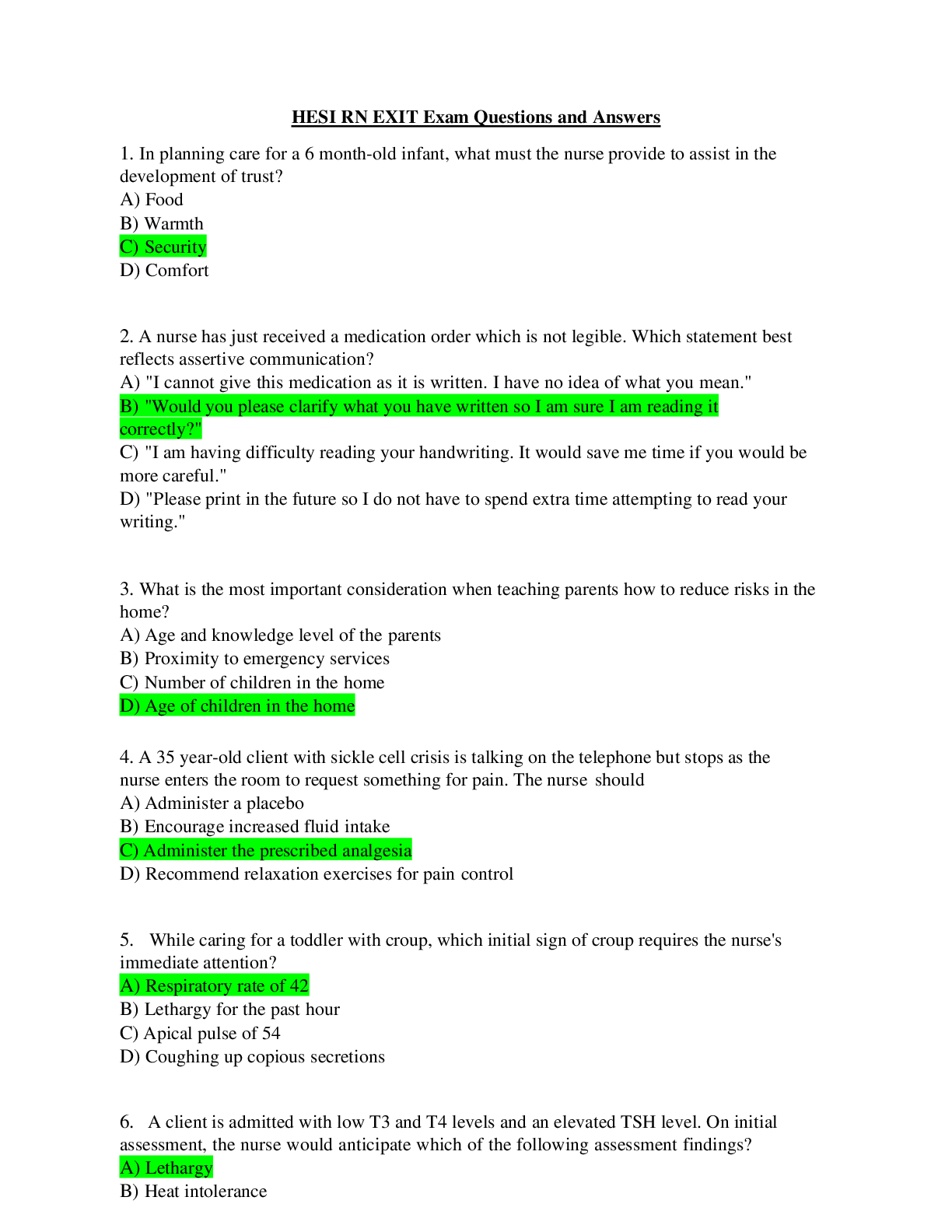
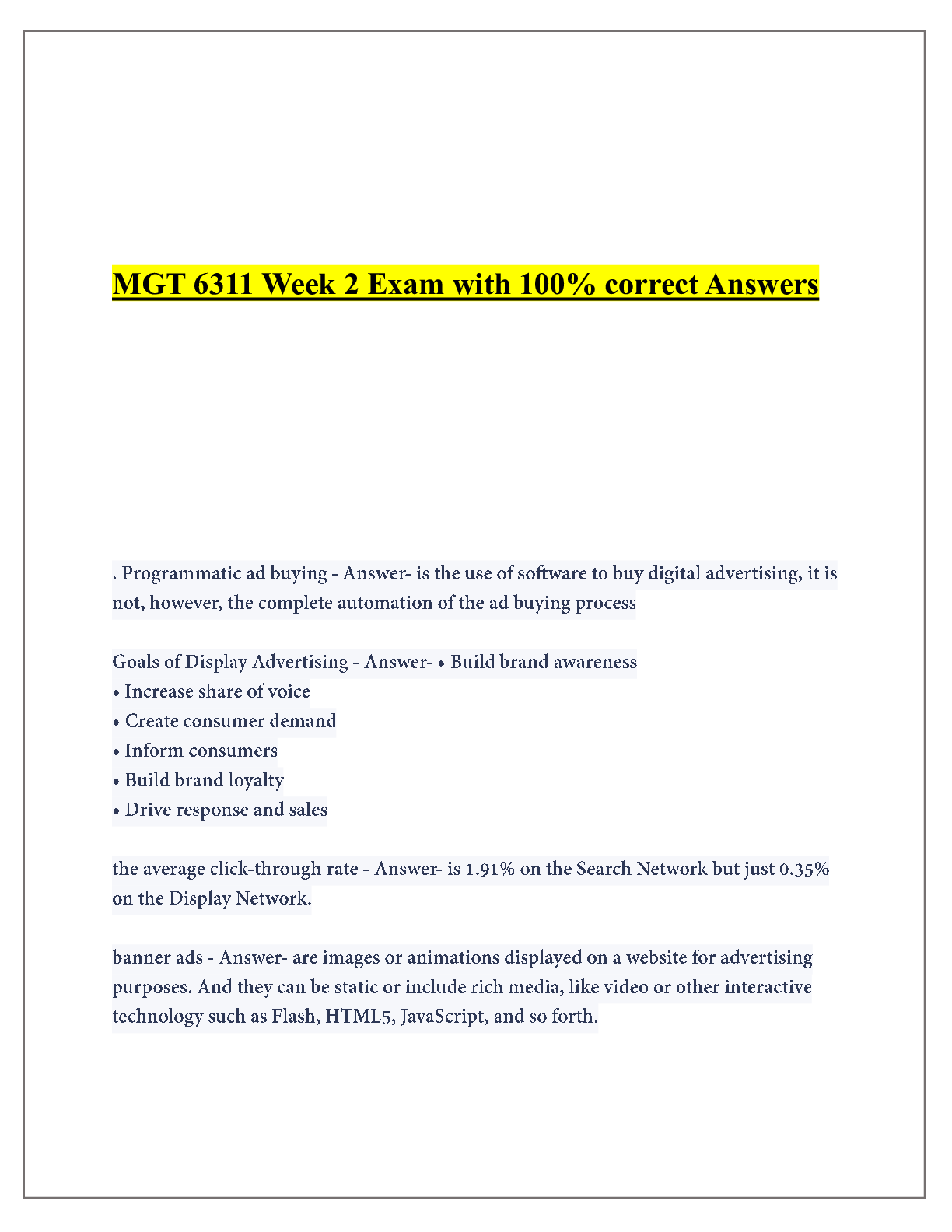



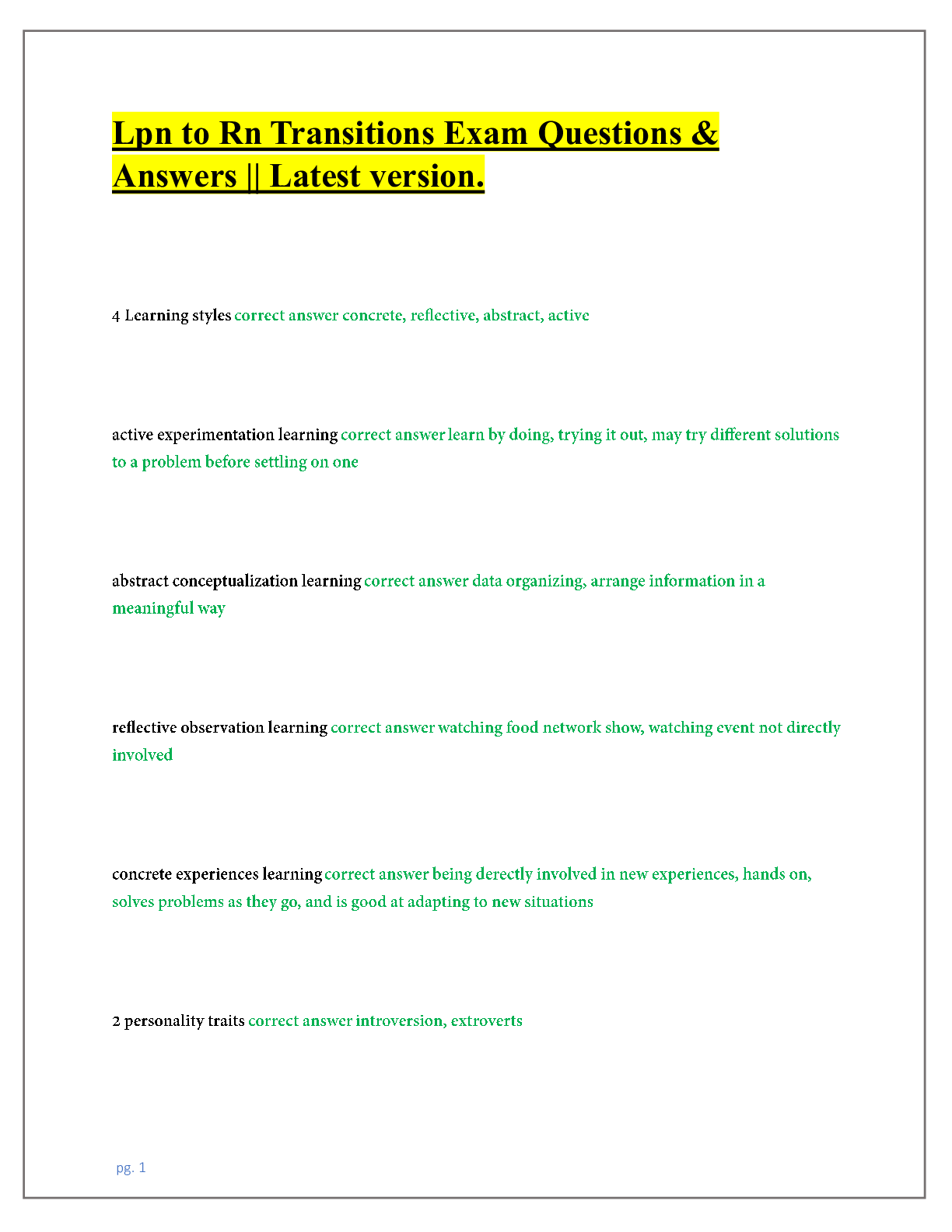


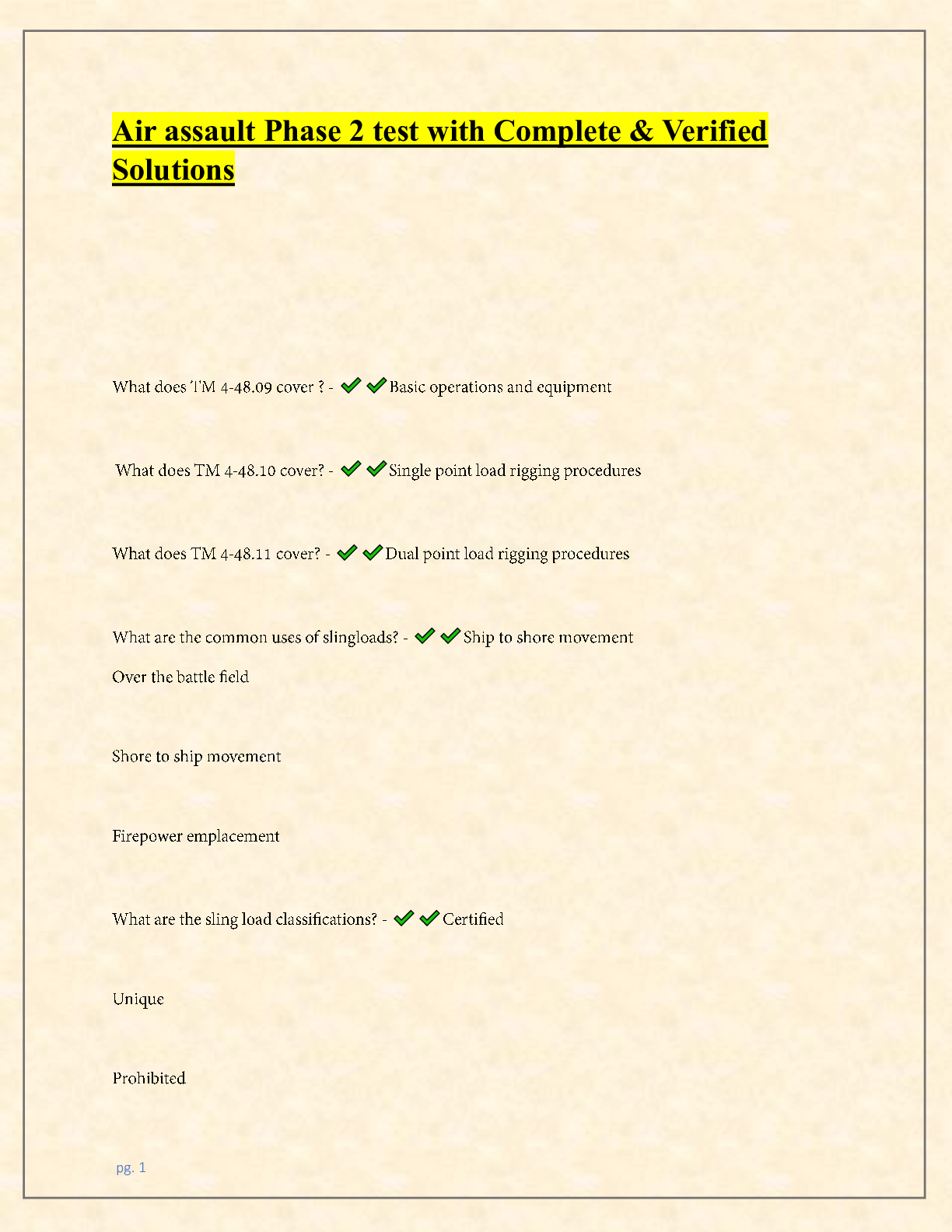

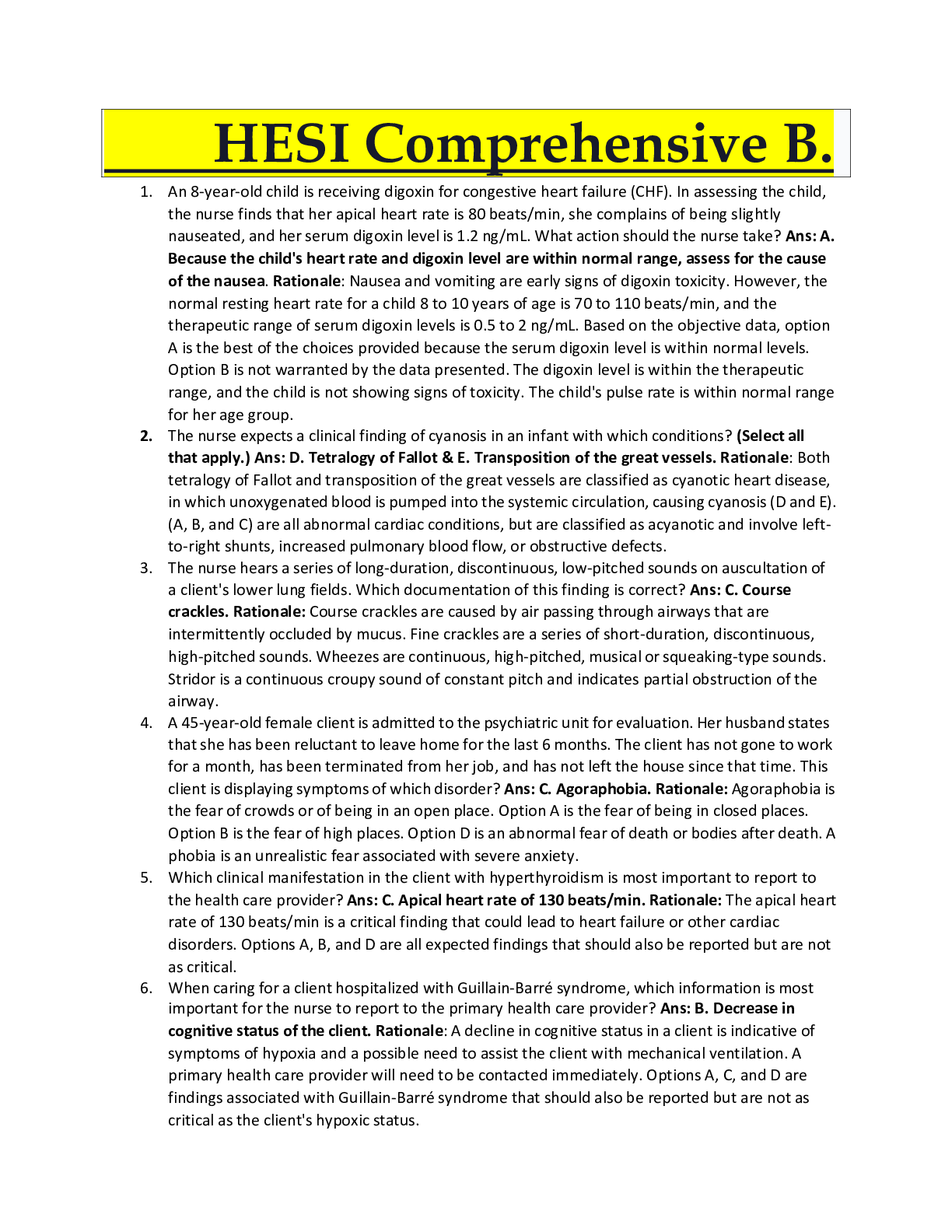
.png)

